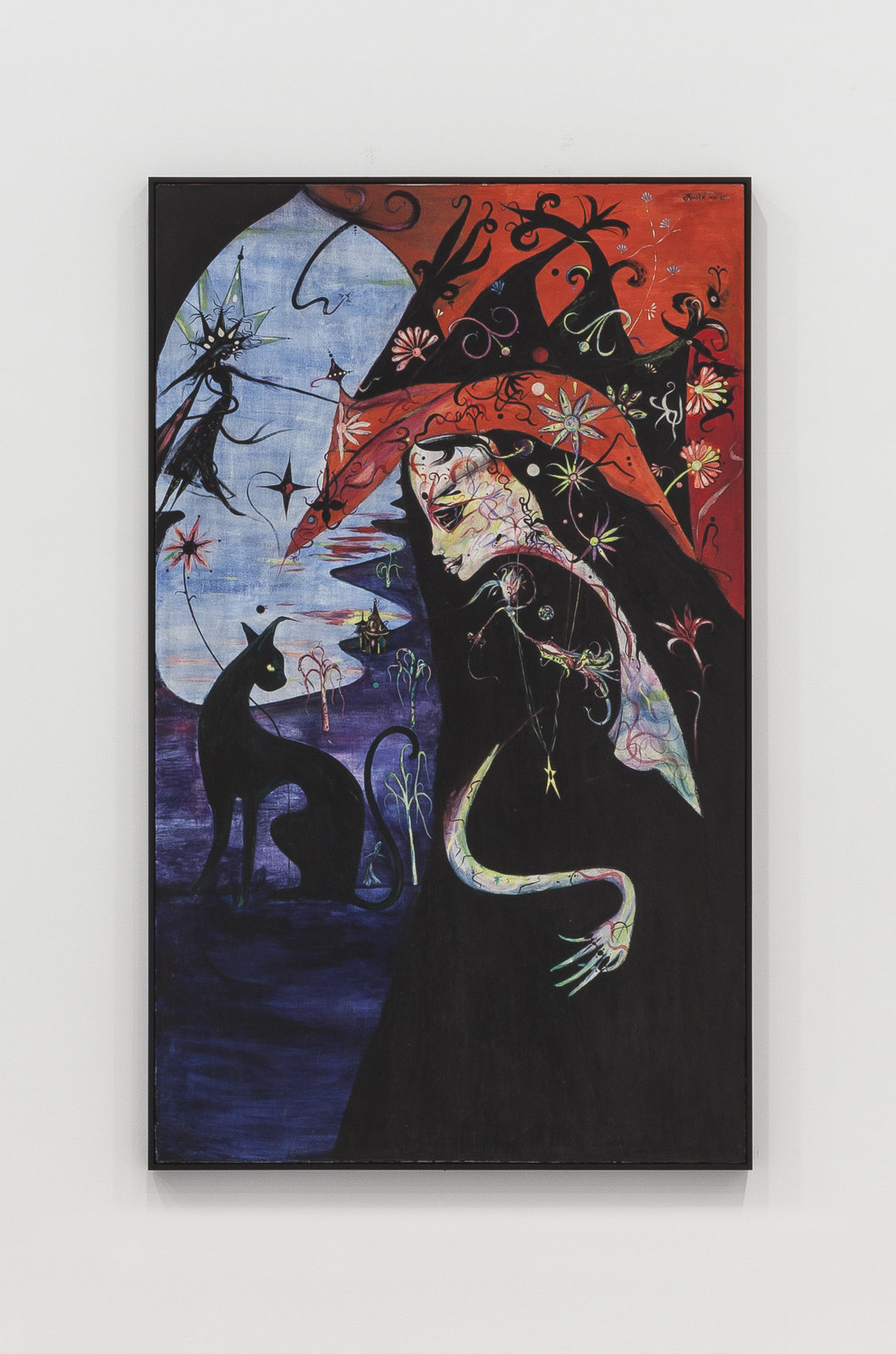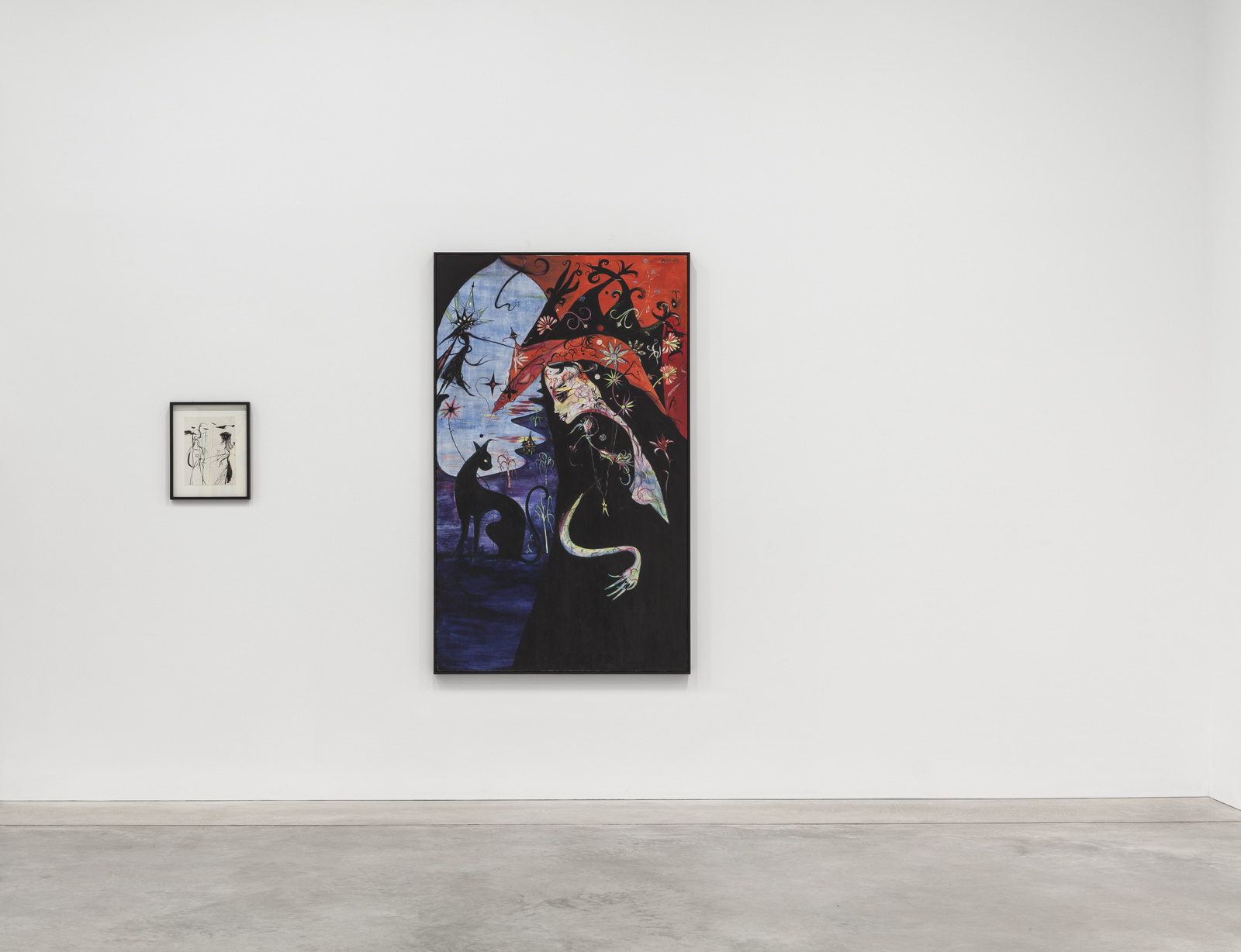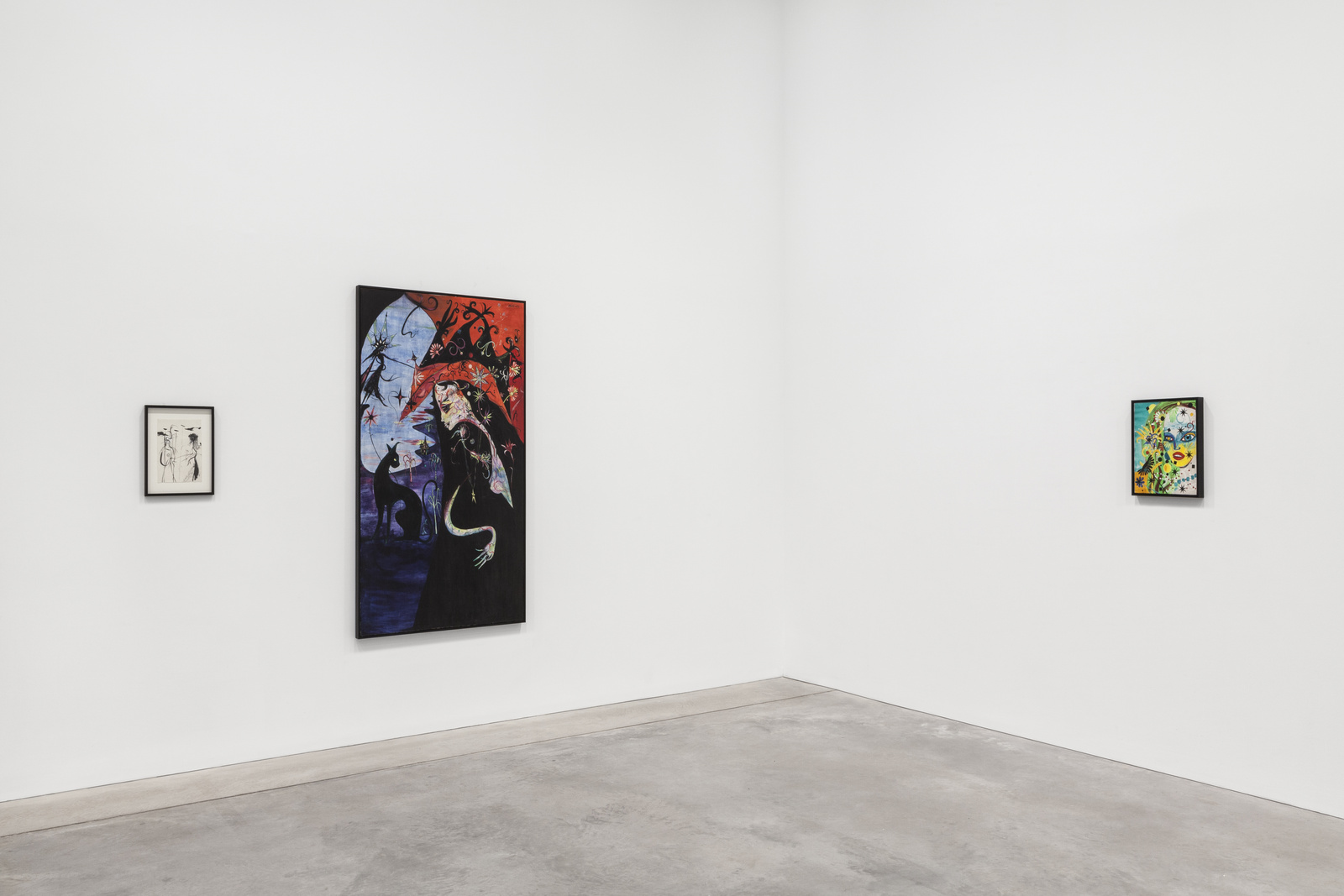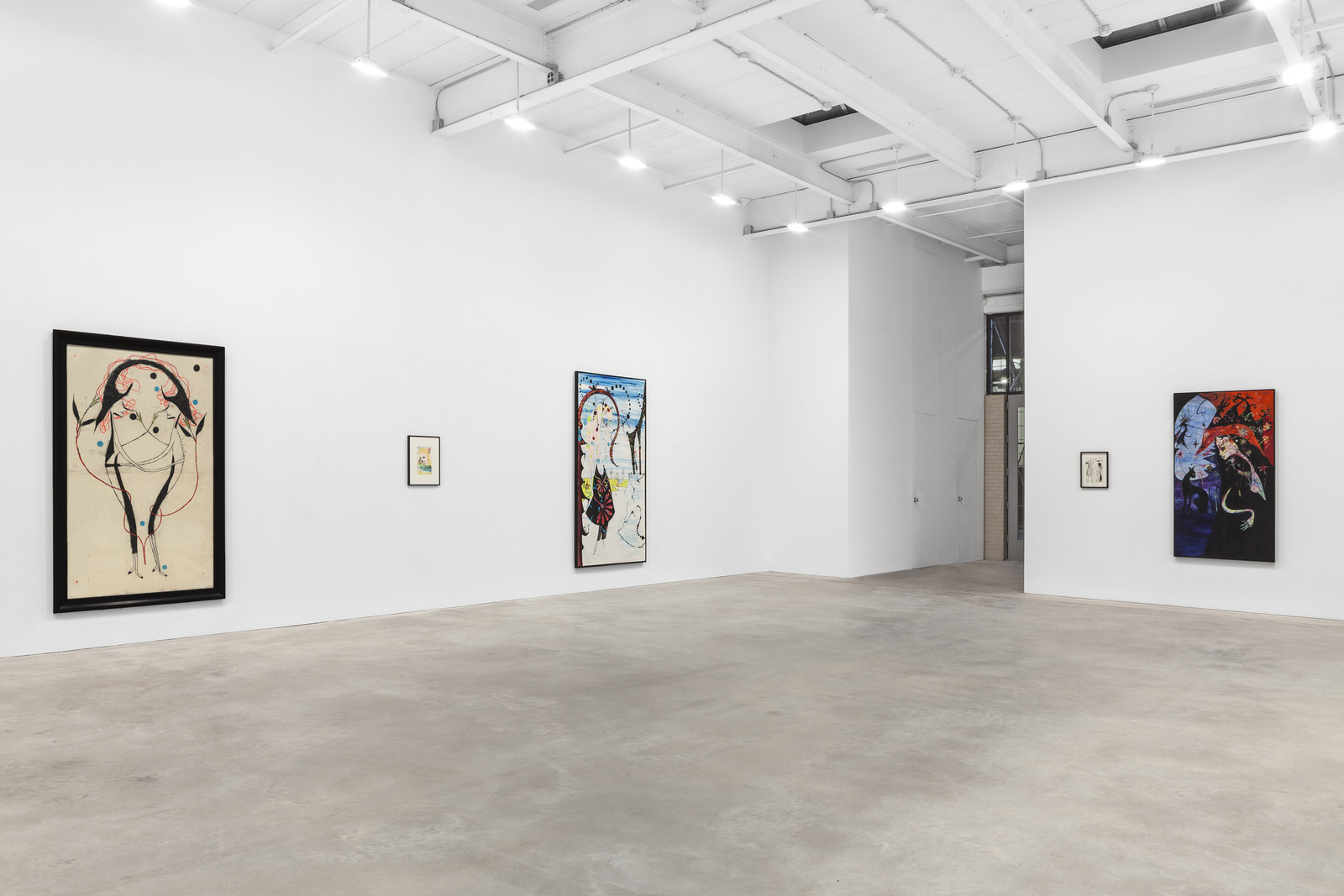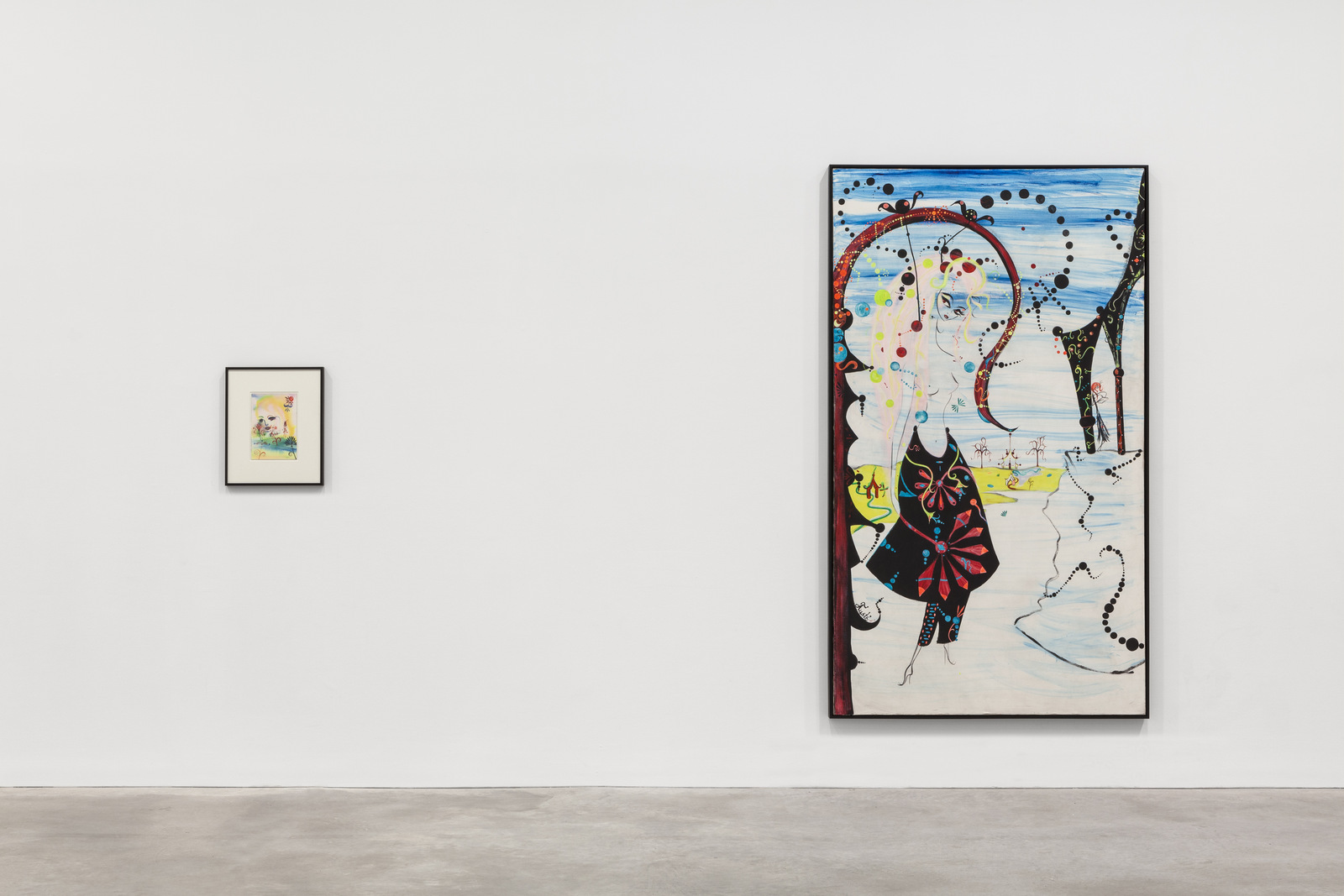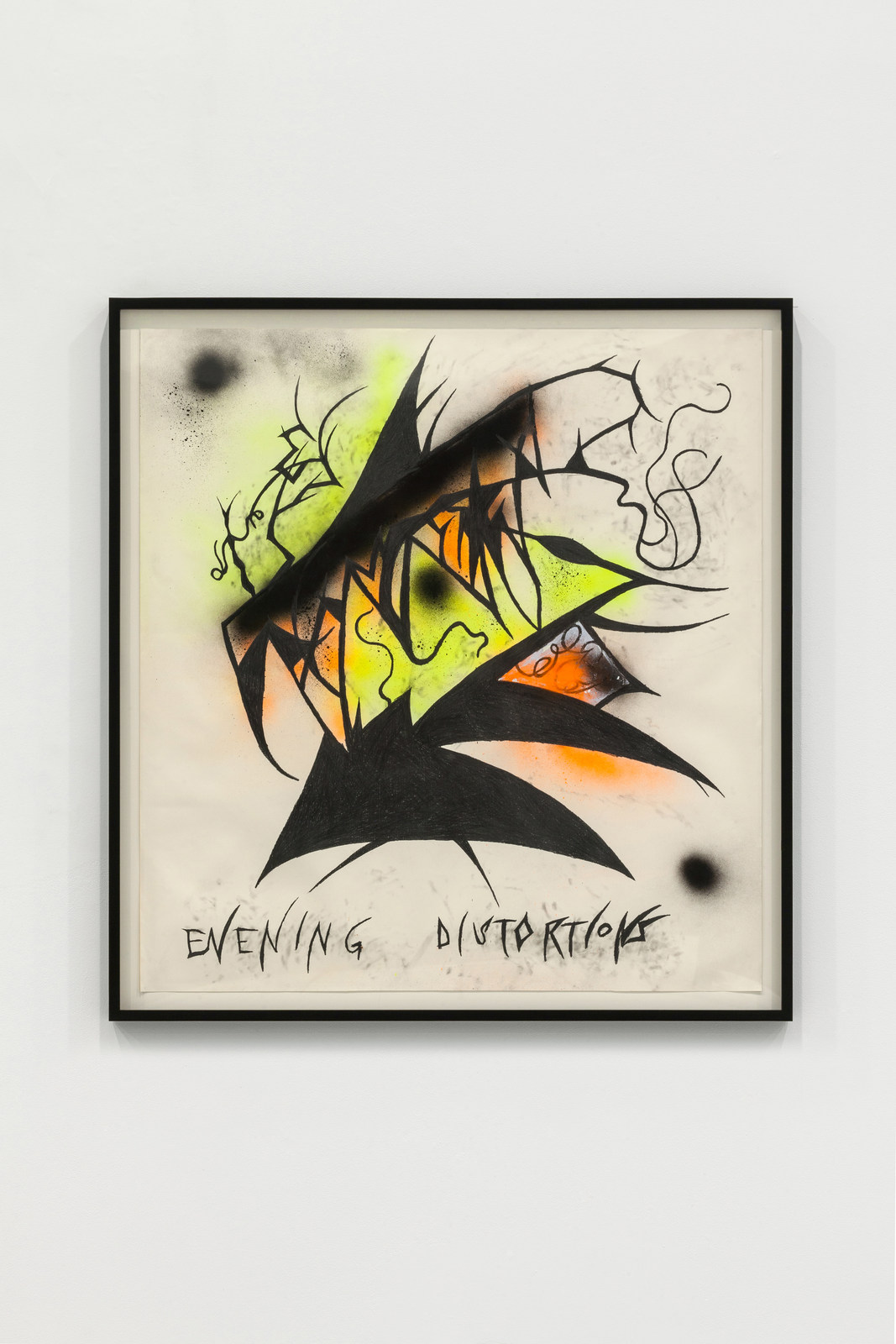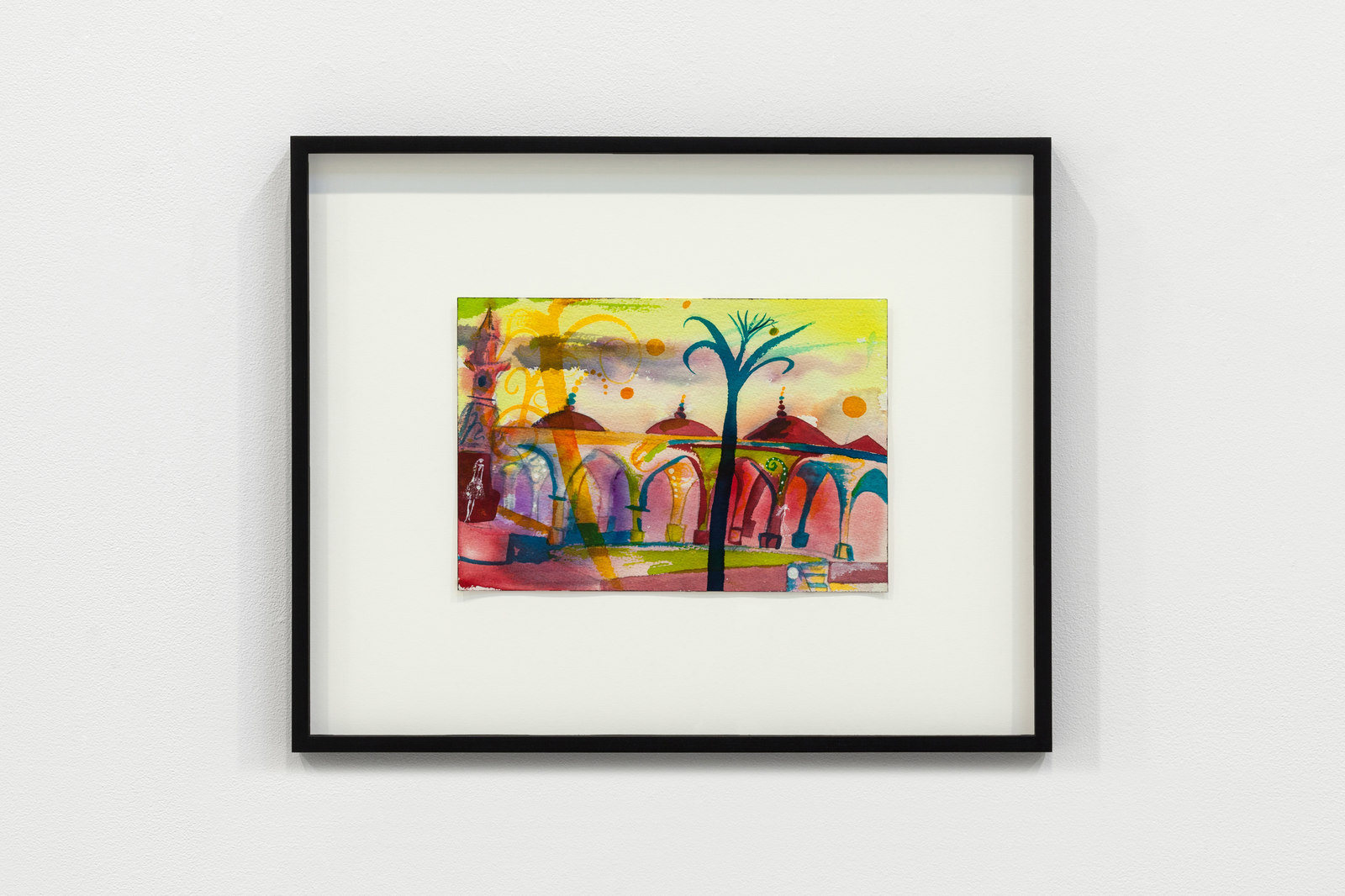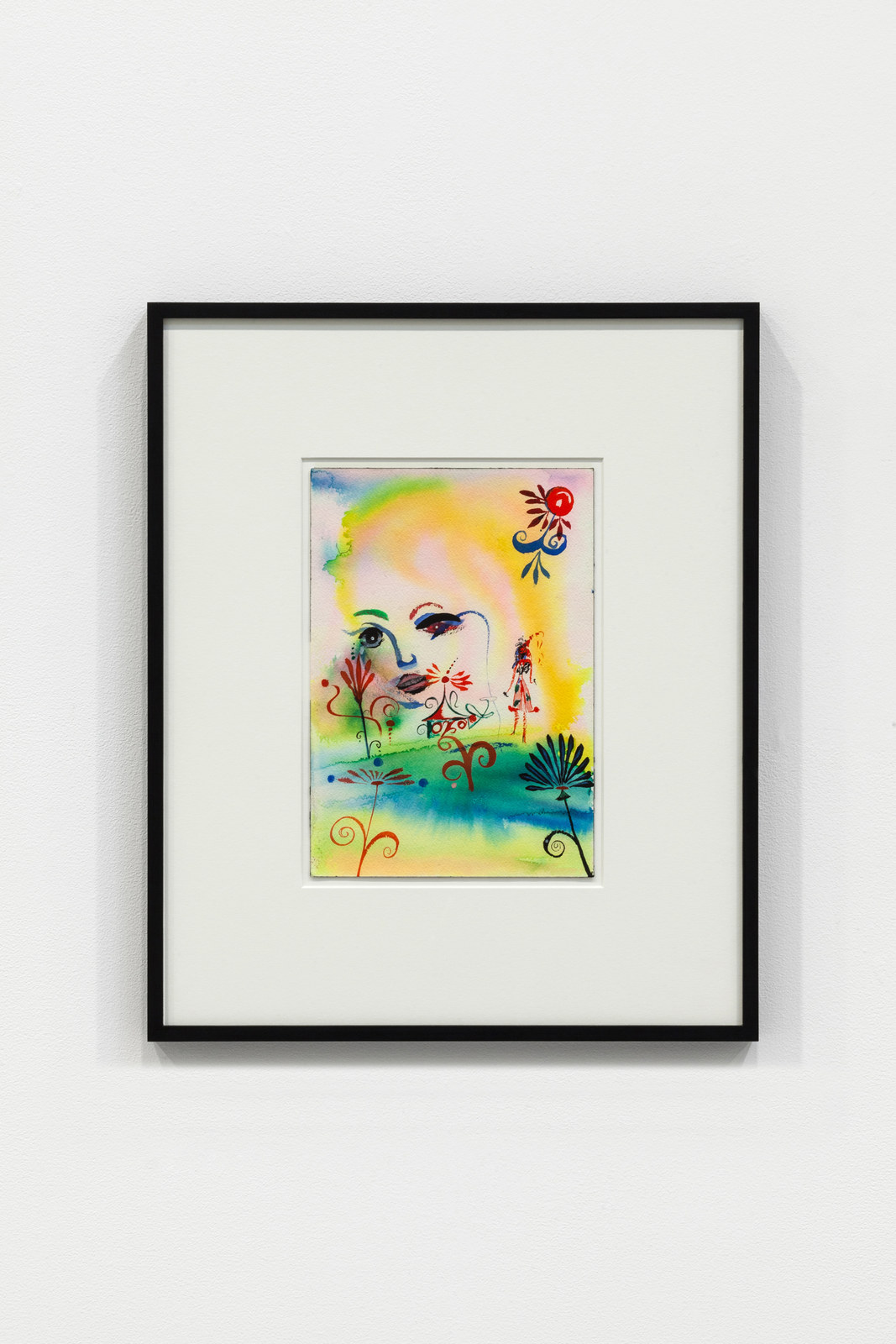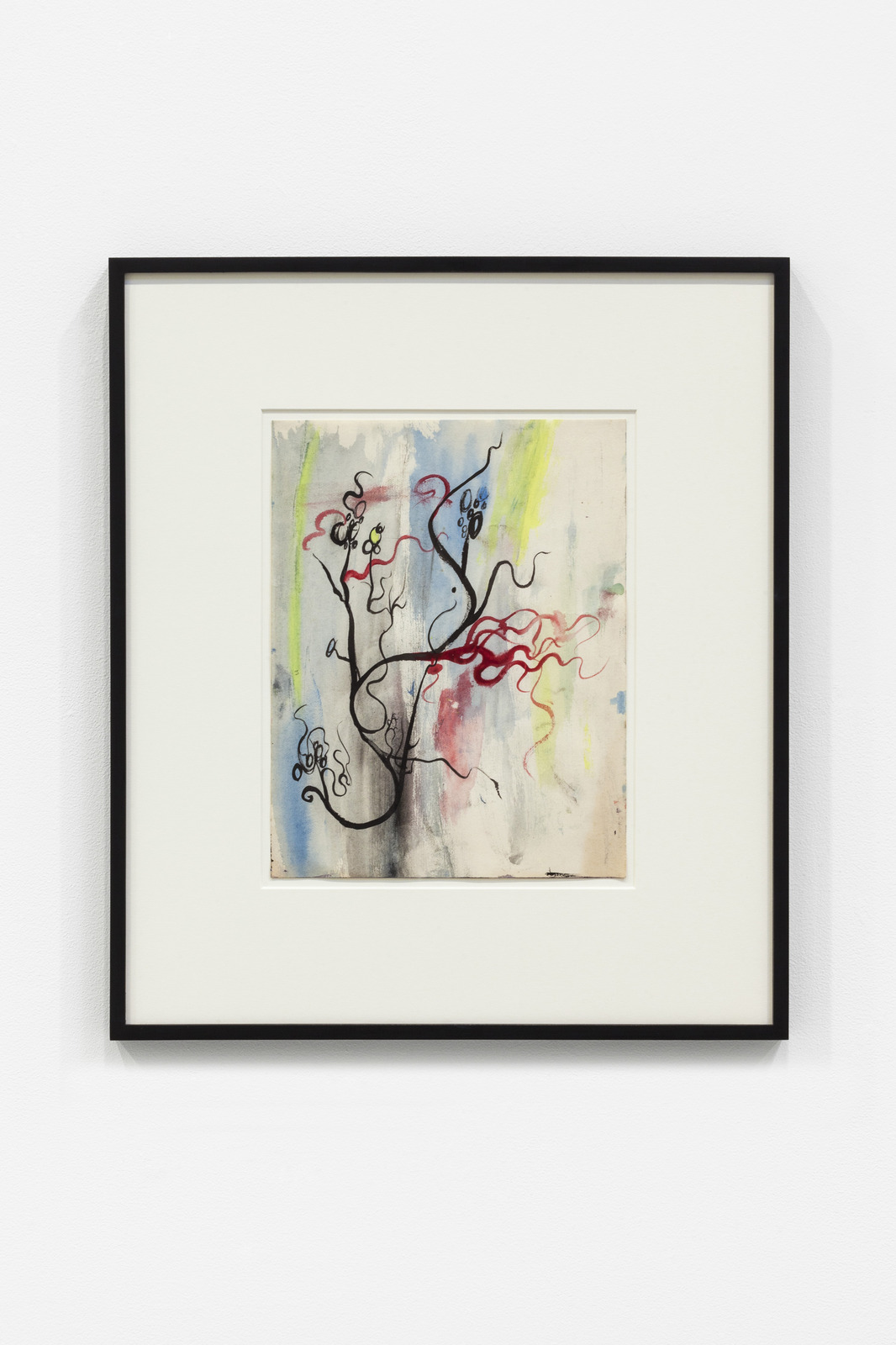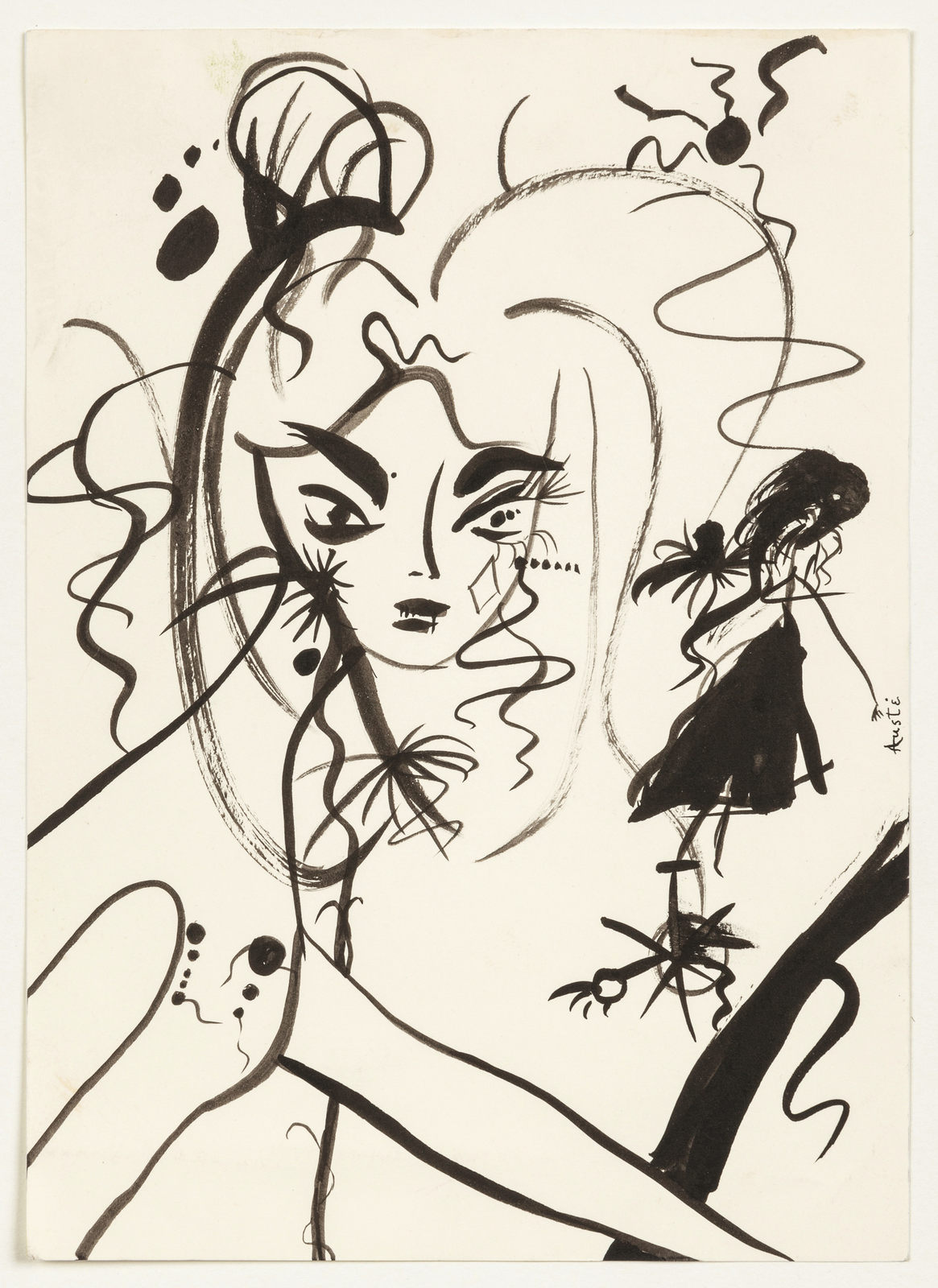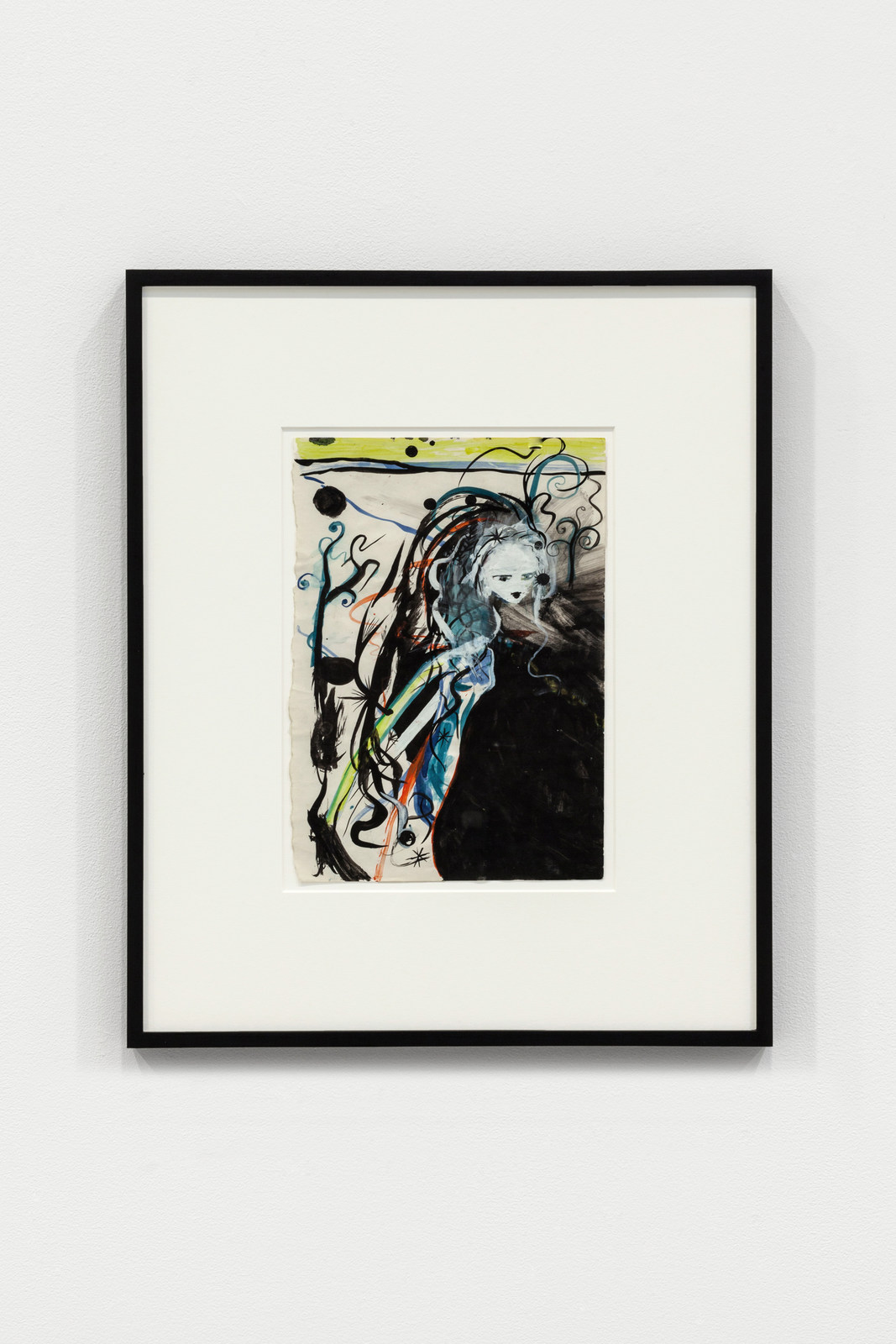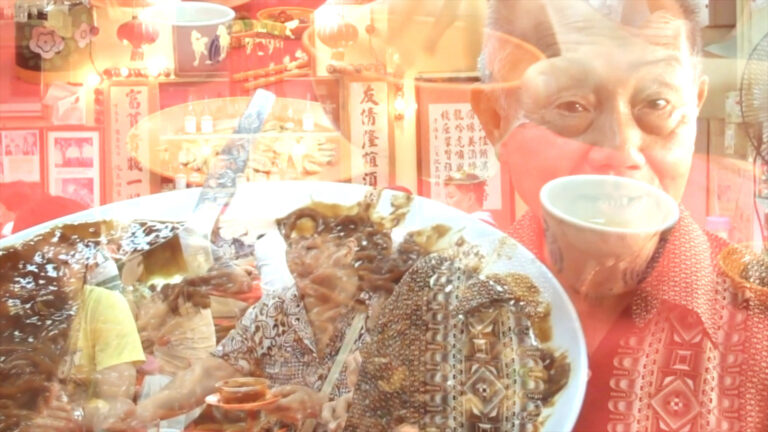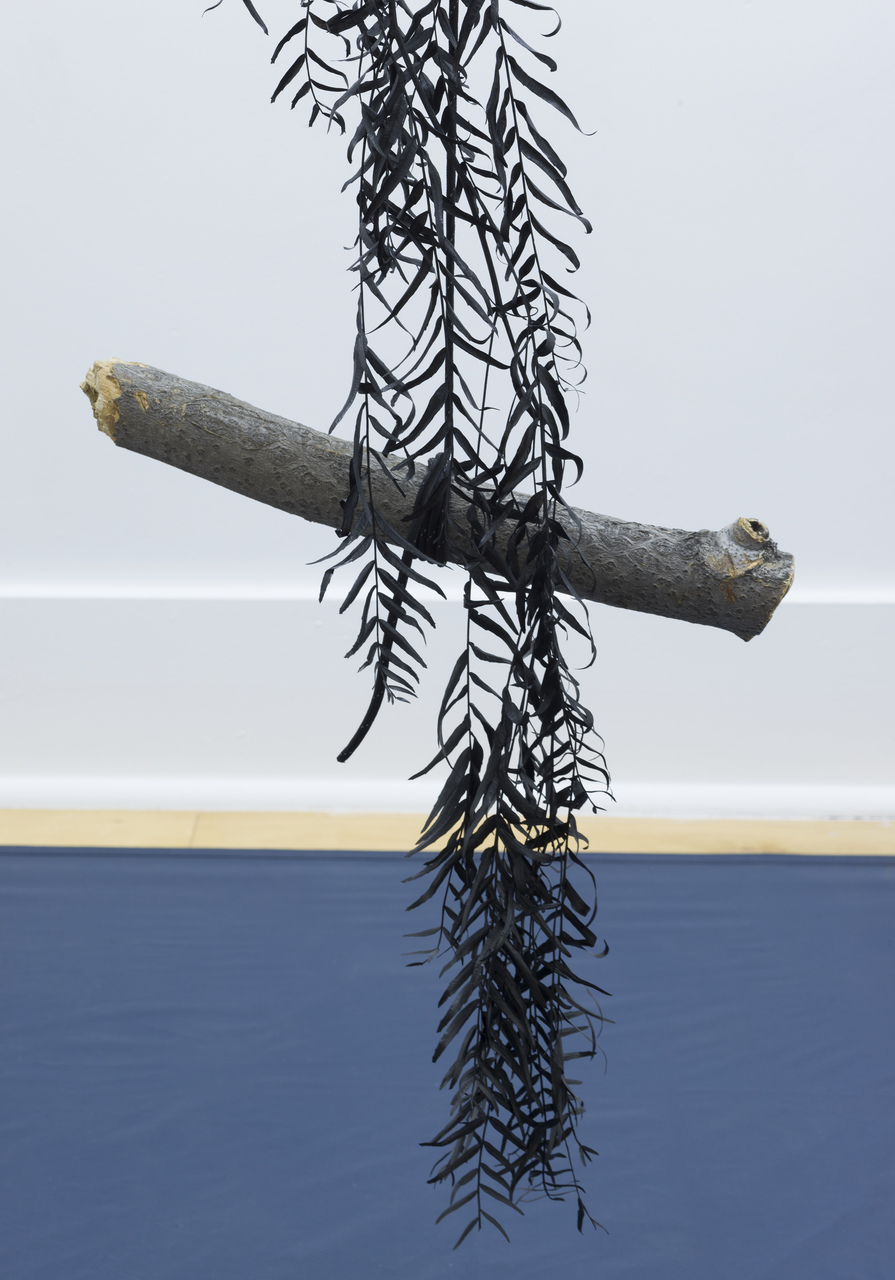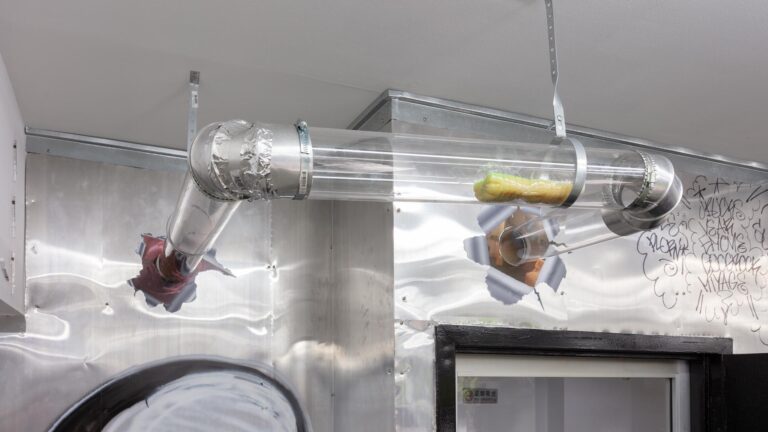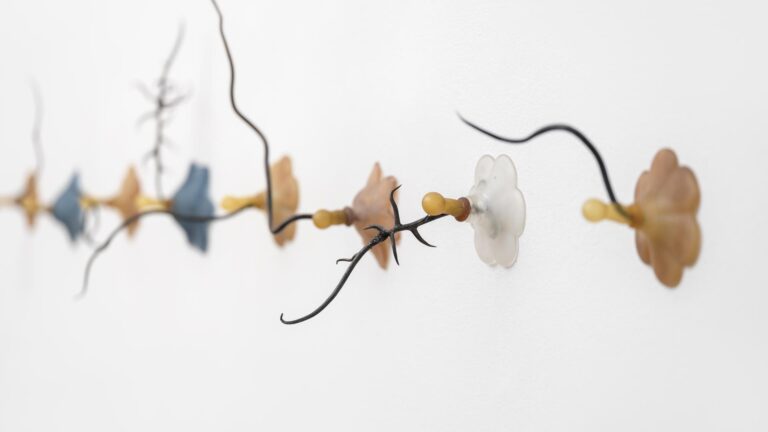Artist: Austė
Venue: Greenspon, New York, US
Date: October 22 – December 3, 2016
Photography: all images copyright and courtesy of the artist and Greenspon, New York
Greenspon is pleased to present an exhibition of paintings and works on paper by Austė.
Austė (b. 1950) lives and works in Weston and New Haven, Connecticut. She grew up in suburban Detroit, where her parents emigrated from Soviet-occupied Lithuania after World War II. They assumed that they would soon return to Europe—an expectation never realized. The family spoke Lithuanian at home, and Austė’s mother passed down the country’s folktales and poetry to her children, enacting costumed dramatizations with them in the woods around the house. Austė didn’t begin to regularly speak English until she was five and enrolled in school. Not fully engaged with American culture or its language, she was somewhat of an outsider among her young peers. Her ongoing pas de deux between that outer and her inner, idiosyncratic world, led to art school at the Philadelphia College of Art, followed by graduate studies at The Art Institute of Chicago.
Austė’s expansive, second-floor studio in a turn of the century, brick building in New Haven is filled with paintings, drawings, writings, artist’s books, objects, and hand-painted backdrops for theatre. This substantial body of work speaks to a ceaseless, cross-disciplinary production both now and over the last four decades. Across these varied activities is a consistent style; characters, landscapes, themes, colors, and gestures are singular and focused. Hotly colored and densely layered scenes center on figures who appear feminine, but are neither strictly female nor human. And the landscapes they inhabit similarly swing between recognizable and otherworldly. Fantasy and reality dialog and inflect upon each other throughout her work, which aligns it with the aesthetics of visionary and outsider art. But Austė is an insider with a long exhibition history, which begins in Chicago and continues to downtown New York, where she moved in 1979.
She exhibited throughout the 1980s at Patricia Hamilton on 57th Street, Tracey Garet and 56 Bleeker Street Gallery in the East Village, Artists Space, Ronald Feldman Gallery, The Aldrich Museum of Contemporary Art, Museum of Fine Arts Houston, and even the bygone New York City nightclub The Palladium. At this same time she was creating costumes and sets for her performance troupe the Cococello Club, and was invited by Barneys New York to create backdrops for their windows. A profile in the February 1987 issue of Interview magazine includes a photo of Austė in bespoke regalia; her dress is hand-painted with her signature curliform, black strokes, flowers, and dots, and she adjusts a crown atop her head. The author describes her pictures as, “pretty as nightshade and sweet as poisoned candy.”
Austė’s imagery attracts and repels. She resides firmly in the legacy of early 20th century painter, poet, performer, set and costume designer Florine Stettheimer, who rejected European, academic painting in favor of a radically feminine and ultimately revolutionary approach to making art in her time. Like Stettheimer, Austė is expertly trained and art historically informed, but darts amongst lowbrow styles such as folk, punk, girly, goth, and drag with freewheeling abandon. She pays little attention to fidelity, preferring exaggeration and camp to craft her figures and scenes, layering worlds-within-worlds which reveal themselves slowly, surprisingly, and oftentimes humorously.
On view at Greenspon are paintings and works on paper made during this early, fertile period between 1979 and 1993, when she was living in New York, and before she departed to raise a family in Connecticut. Text scrawled across the bottom of a large, graphite and sprayed acrylic on paper piece reads “Evening Distortions,“ also the artwork’s title. Above is a thickly lined, black, ink drawing of a gnarled tree with jaws spewing a neon yellow and orange glow. It’s one of the earliest works in the show, and a marker of Auste’s penchant for punk and her association with the no wave scene. Also on view is Yellow Woman (1990), a portrait of a golden female figure in profile, set against a turquoise background. The subject has long, luxurious eggplant-hued hair, is adorned with Nefertiti-like face paint, layers of pearls, and holds an outsize, fuchsia bouquet. Bubble-like dots float across the surface, and flora hangs and grows from the edges of the canvas. These two examples highlight Auste’s fluid movement between darkness and light, hard edges and soft contours. The exhibition offers a view into an artist with a fantastically rich and complex subconscious, and the unruly worlds she can create.
Austė, Ornament Thy Self With Modesty, 1984–85
Acrylic on canvas, 65 1/2 x 39 1/4 inches (166.4 x 99.7 cm)
Austė, Untitled, c. 1980
Ink on paper, 10 1/2 x 8 inches (26.7 x 20.3)
Austė, Evening Distortions, 1979
Graphite and paint on paper, 45 x 42 inches (114.3 x 106.7 cm)
Austė, Nine Powers of Nine Flowers, 1981
Acrylic on paper, 29 1/2 x 41 1/2 inches (74.9 x 113 cm)
Austė, Untitled, c. 1980
Watercolor and ink on paper, 7 7/8 x 9 3/4 inches (20 x 24.8 cm)
Austė, Yellow Woman, c. 1990
Acrylic on canvas, 68 x 39 1/4 (172.7 x 99.7 cm)
Austė, Science and Industry, 1979
Pencil, paint, and pastel on paper, 79 1/2 x 54 inches (201.9 x 137.2 cm)
Austė, Untitled, c. 1980
Watercolor and ink on paper, 12 x 9 inches (30.5 x 22.9 cm)
Austė, All Manner of Incognito, 1985–86
Acrylic on canvas, 84 x 48 inches (213.4 x 121.9 cm)
Austė, Untitled, c. 1980
Watercolor and ink on paper, 12 x 9 inches (30.5 x 22.9 cm)
Austė, Untitled, c.1980
Ink on paper, 11 x 8 inches (27.9 x 20.3 cm)
Austė, Untitled, c. 1980
Ink on paper, 8 x 5 inches (20.3 x 12.7 cm)
Austė, Untitled, c. 1980
Ink on paper, 8 x 5 inches (20.3 x 12.7 cm)
Austė, Untitled, c.1980
Ink on paper, 11 x 8 inches (27.9 x 20.3 cm)
Austė, Untitled, c.1980
Ink on paper, 11 x 8 inches (27.9 x 20.3 cm)
Austė, Untitled, 1980
Ink and watercolor on paper, 10 3/4 x 7 3/4 inches (27.3 x 19.7 cm)

